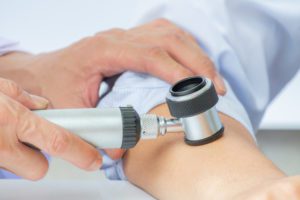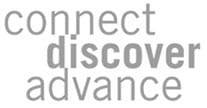Are You (or Your Doctor) Using Dermoscopy in Skin Cancer Screenings?
- Posted on: Jan 15 2022
 Approximately one-third of the cancer diagnoses that are made each year are some form of skin cancer. It is no secret in the medical community that skin cancer is the leading form of cancer in the United States. This knowledge is an incentive for every practitioner who performs skin cancer screenings to do so with the utmost diligence. While non-melanoma skin cancers rarely result in death, they can result in devastating physical and cosmetic effects. The early diagnosis of basal cell and squamous cell carcinomas is as crucial to patient outcomes as the early detection of melanoma. Regardless of the type of skin cancer that is diagnosed, the objective in treatment is to preserve life as well as tissue. Here, we discuss how dermoscopy plays an essential diagnostic tool.
Approximately one-third of the cancer diagnoses that are made each year are some form of skin cancer. It is no secret in the medical community that skin cancer is the leading form of cancer in the United States. This knowledge is an incentive for every practitioner who performs skin cancer screenings to do so with the utmost diligence. While non-melanoma skin cancers rarely result in death, they can result in devastating physical and cosmetic effects. The early diagnosis of basal cell and squamous cell carcinomas is as crucial to patient outcomes as the early detection of melanoma. Regardless of the type of skin cancer that is diagnosed, the objective in treatment is to preserve life as well as tissue. Here, we discuss how dermoscopy plays an essential diagnostic tool.
Historically, skin cancers have been clinically observed as a set of visual symptoms. Most people are familiar with the ABCs of skin cancer. You know, Appearance, Border, Color, and more. The issue with the ABCs is that they rely on naked-eye observation of the characteristics of a growth or mole, and the naked-eye leaves room for inaccuracy. Studies estimate that this type of examination is, at best, 80% effective. Judging only by these characteristics, it is possible to overlook a symmetrical, evenly-pigmented melanoma. Likewise, nonmalignant growths that demonstrate some of the characteristics of melanoma may be needlessly excised. Doctors who utilize dermoscopy elevate their level of care.
Dermoscopy Could be Game-Changing
Studies have proven that doctors reach more accurate skin cancer diagnoses when they use dermoscopy. Historically, this high-level examination technique has been used as a second-line diagnostic screening for lesions deemed suspicious in a basic dermatologic examination. More and more, experts are positing that dermoscopy has a place in the initial skin cancer screening. In this regard, the basic skin cancer screening is more likely to accurately identify which lesions qualify for biopsy or removal and which do not.
Multiple studies have shown that early detection is a primary factor in improving patient outcomes. Another primary factor is excision technique. As the medical field has progressed over time, Mohs micrographic surgery has continued to receive recognition as a viable treatment option for various types of skin cancer, even certain melanomas.
The American Society for Mohs Surgery is committed to expanding physicians’ knowledge of skin cancer diagnosis and treatment. We offer multiple levels of curriculum through various courses to help clinicians advance their skills. To learn more, contact us at (800) 616-2767. Are you looking for a Mohs surgeon? Visit our directory here.
Posted in: Skin Cancer


